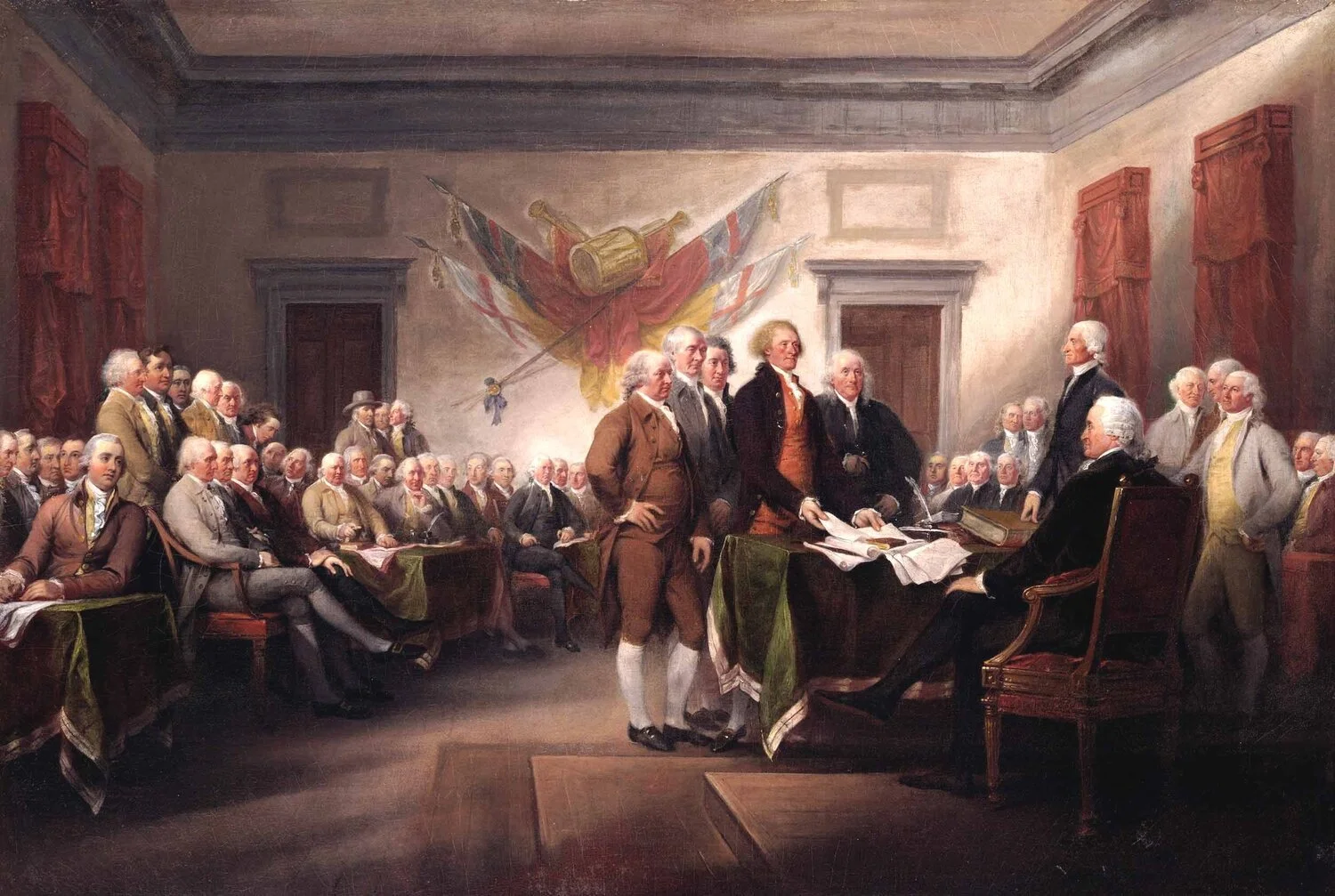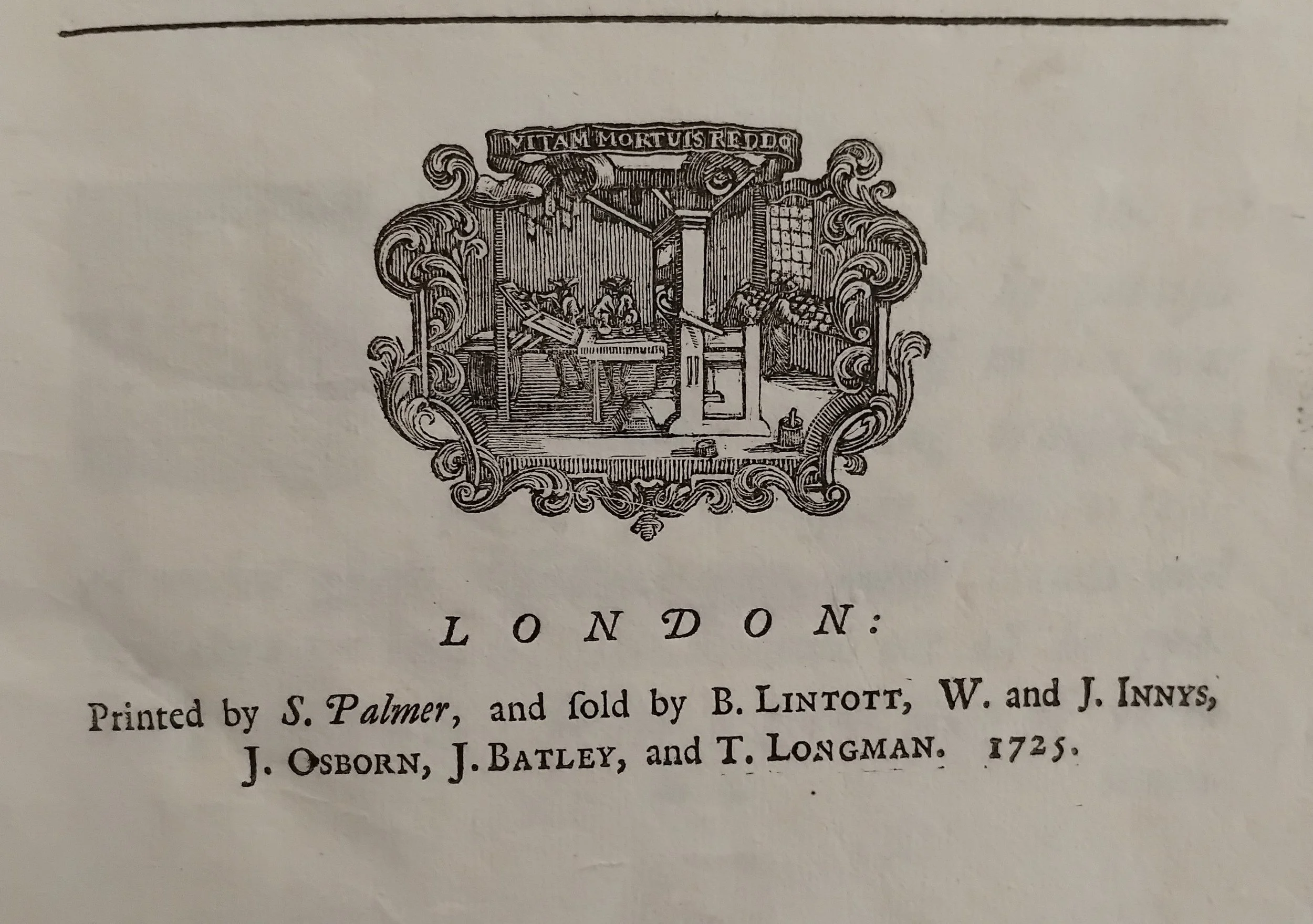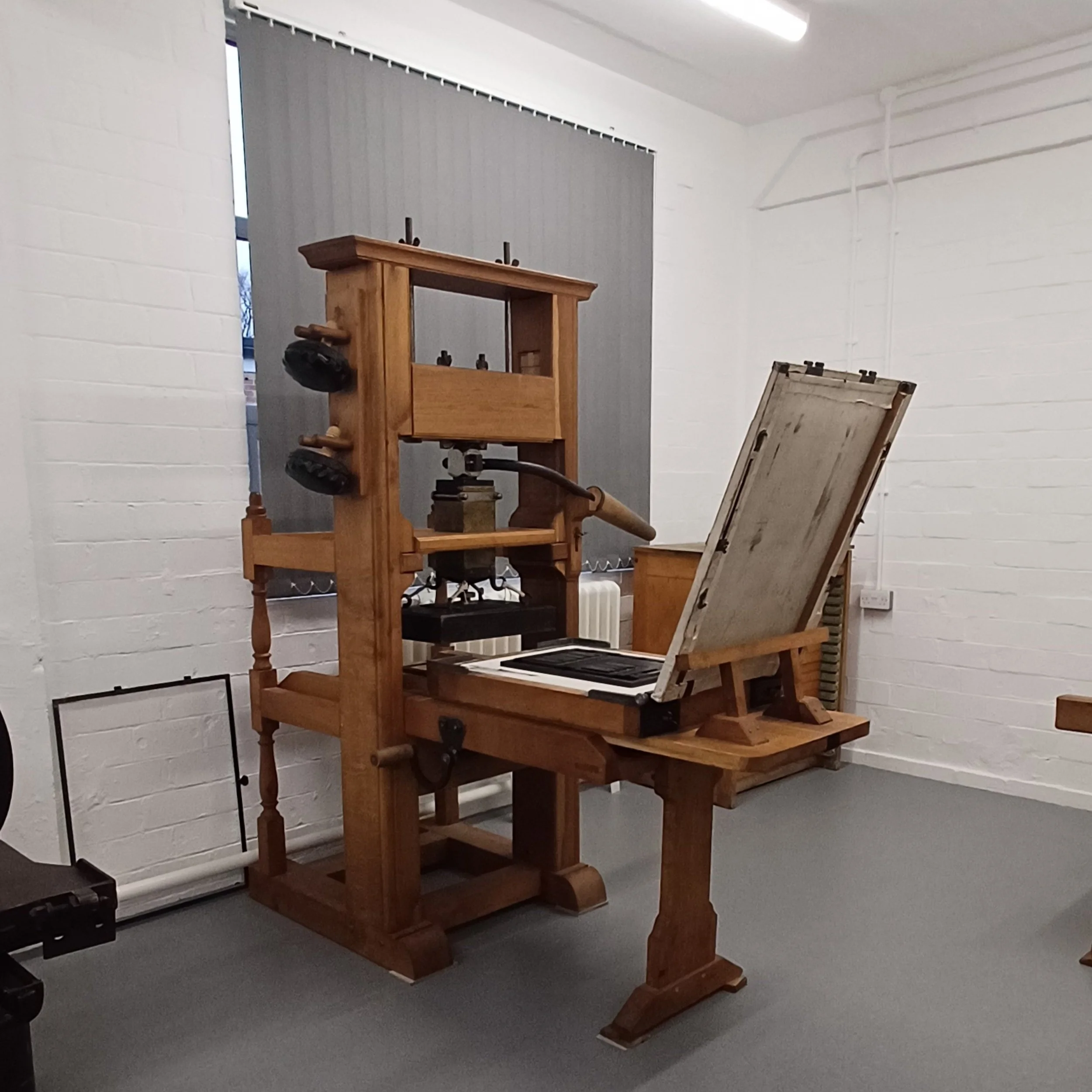
Benjamin Franklin
300th anniversary
Franklin in London
2025 marks the 300th anniversary of Benjamin Franklin's first visit to London. At St Bartholomew the Great we have special reasons for celebrating.
Remembered as an inventor, diplomat and a Founding Father of the USA, Benjamin Franklin always described himself as a printer. As a boy he ran away from his apprenticeship with his brother James in Boston, which caused a serious family rift, and he worked for another printer in Philadelphia. By the time he was 18 he had tired of working for the eccentric Samuel Keimer, on a beaten-up press with worn-out type. He thought he had secured a powerful patron in the person of Pennsylvania governor Sir William Keith, although Keith's letters of recommendation turned out to be worthless. Without money or influential friends he crossed the Atlantic to learn from the leading printers in London, which was the centre of the print trade in the English-speaking world. He arrived on Christmas Eve 1724.
John Trumbull. “The Declaration of Independence.” Yale University Art Gallery.
Franklin in St Bart’s
Which is where we come in. The ancient Lady Chapel of St Bartholomew the Great is one of two places in the country where the Virgin Mary is said to have appeared, but it had been separated from the rest of the church at the Reformation, and in 1725 it housed the printing shop of respected master printer Samuel Palmer, who gave Franklin his first job in London. In February 2025 specialist hand press printers will operate a working replica of the 'Franklin press' on the exact spot where Franklin mastered the art of printing 300 years ago. The original Franklin press, which Franklin used in London in 1725, is now in the Smithsonian Museum in Washington, but we are borrowing a working reconstruction from Reading University.
Franklin worked for Palmer as a compositor, or typesetter, one of the most skilled jobs in any printing shop. Individual letters of metal type - and the spaces between - were set character by character, backwards, in a wooden frame. It was piecework rather than paid by the day or week, so both speed and accuracy were essential. From his Autobiography we know that he set the type for the third printing of Wollaston's Religion of Nature Delineated, a controversial theological work which influenced Enlightenment thought in both Britain and America. An example of the book will be on display.
On the title page of the ‘Religion of Nature Delineated’, Palmer uses an image of a printer’s shop in action. Could this be an image of Palmer’s Prints?
19 year old Franklin was a long way from the celebrity scientist, man of letters and passionate advocate for the American colonies which he had become by the time of his second residence in London. He lived in Craven Street between the 1750s and 1770s, for two decades rather than a little under two years, and it's easy to overlook his first visit. However, Franklin's early experiences in Hogarth's London helped shape his later life. William Hogarth was baptized in St Bartholomew the Great, and he and Franklin walked the same streets at the same time. Franklin's artisan background already set him apart from the wealthier Founding Fathers, but he was older too, and his exposure to the poverty and politics of Georgian London, so memorably recorded by Hogarth, gave him a perspective which was unique among the other founders of the United States. We intend to celebrate that, too.
A printing press returns!
In February we will be hosting a fully-operational replica of the printing press which Franklin used here in London in 1725. The replica is on loan from the University of Reading. Across the month of February some the leading hand-press printers in the country will be demonstrating how it works, and you will be able to witness the printing of commemorative broadsheets and keepsakes (which, in some cases, can be personalised). You can even buy them to take home!
Links will be available shortly to book your visit.
Celebrating Franklin
Key dates in 2025
Franklin’s Printing Press starts being used in St Bartholomew the Great
3 February
When the young Benjamin Franklin first set foot in London on Christmas Eve 1724 he entered and immediately embraced a cosmopolitan world with links to many corners of the world. The printing house of Samuel Palmer (Lady Chapel at Saint Bartholomew the Great Church) where he found work the following month was at that time engaged in a project to print both a New Testament and Psalter in Arabic for the Greek Orthodox Patriarchate of Antioch (based in Damascus, Syria) together with the Coptic Orthodox Patriarchate in Cairo and the Nestorian in Ninevah.
Nicholas Chapman will explore the background and outworking of this project and what is known of Franklin’s involvement in it. He will explore Franklin’s interest in the Orthodox Christian East during the remainder of his long life and how his involvement as a young man in Arabic printing would impact at a much later date on the appearance of the first printed copies of the US Declaration of Independence.
Nicholas Chapman, Benjamin Franklin: Printing for Arab Christians in Early Eighteenth Century
10 March
17 June
Peter Moore, Life, Liberty and the Pursuit of Happiness: Britain and the American Dream
Peter Moore is a writer, journalist and lecturer. He teaches creative writing at the University of Oxford. He is the author of The Weather Experiment and Endeavour, which were both Sunday Times Top Ten Bestsellers and multiple books of the year. His latest book, Life, Liberty and the Pursuit of Happiness was a British pre-history of the American Revolution and it was published in 2023 to wide acclaim.



